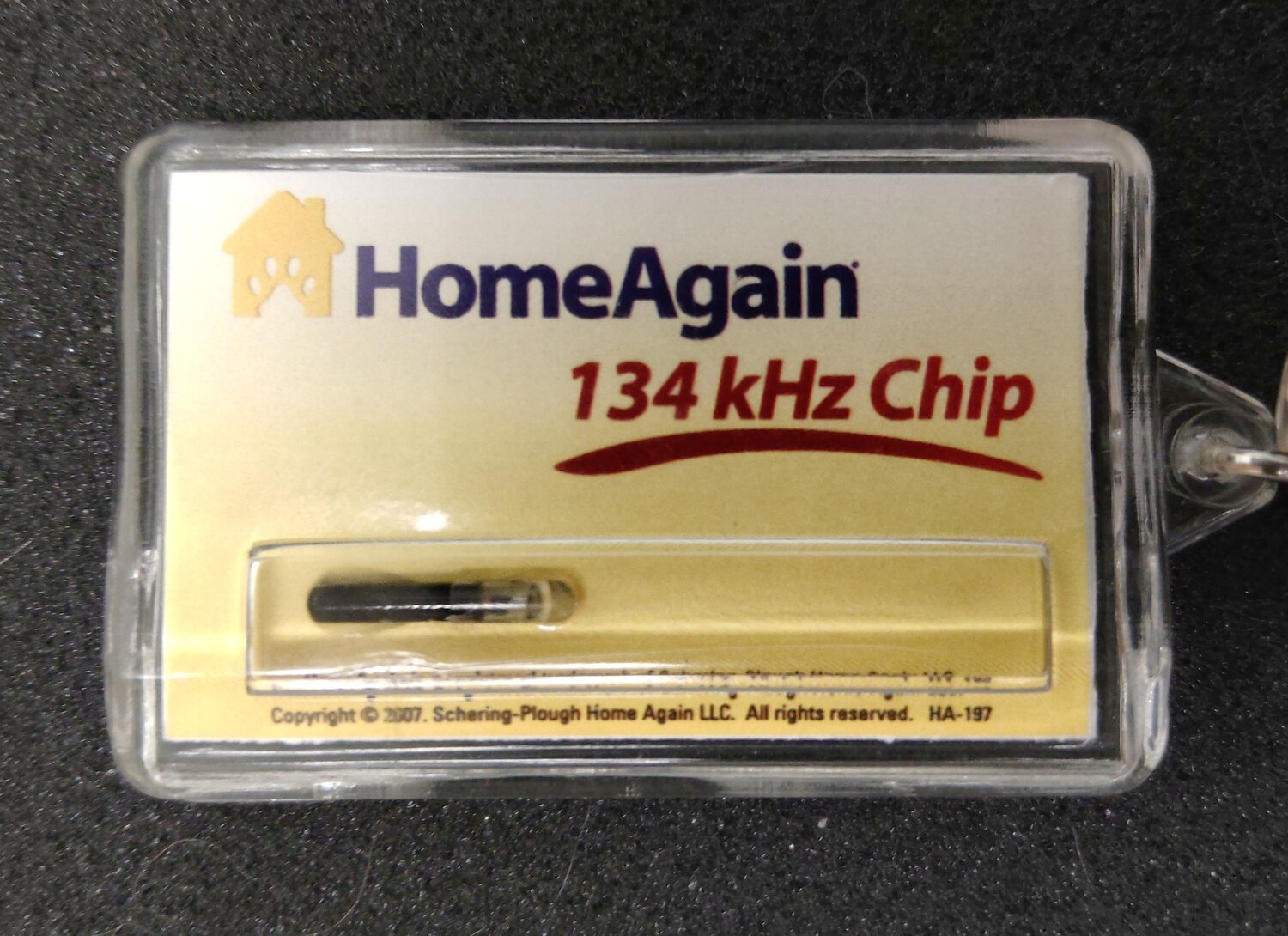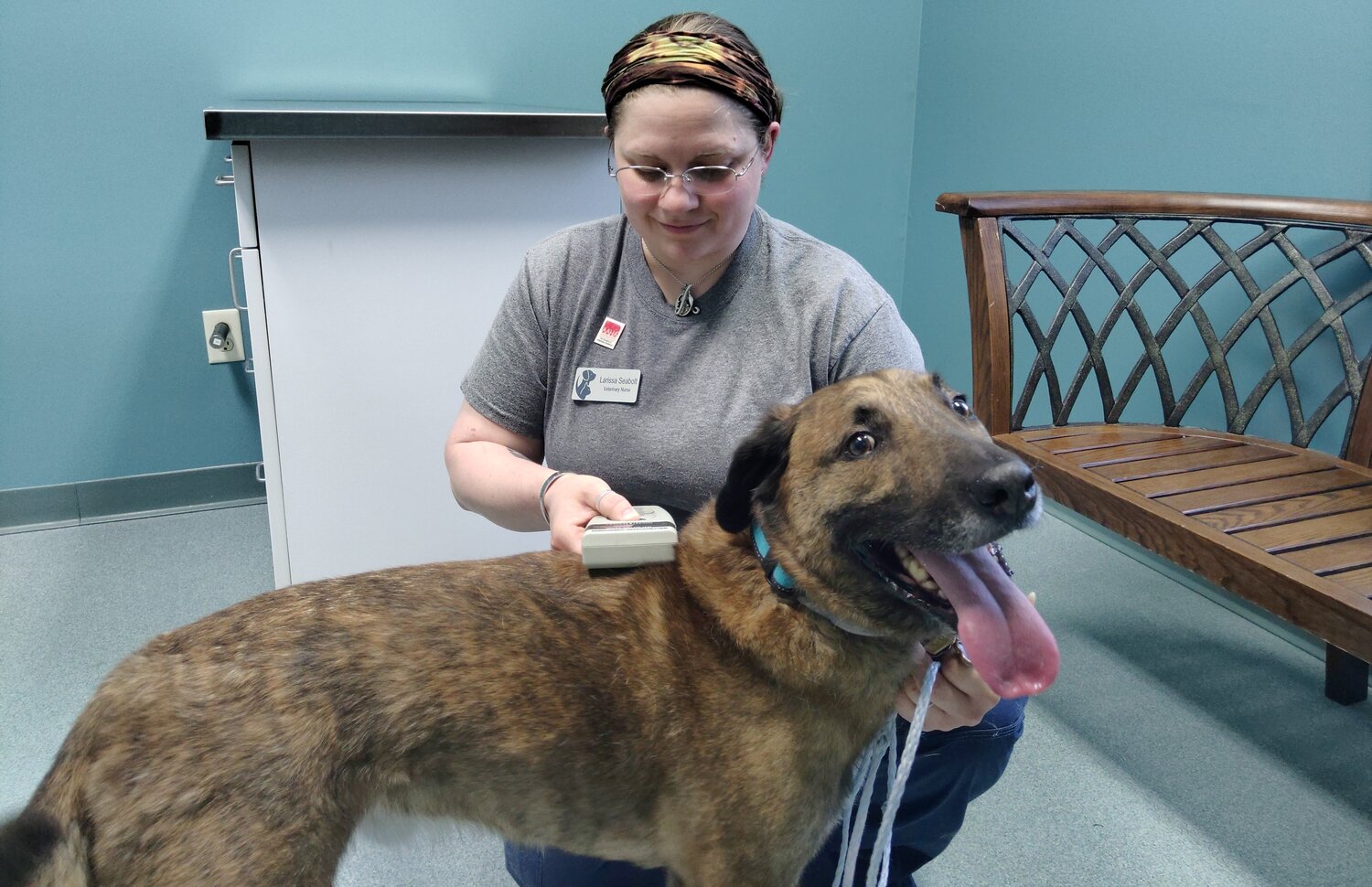Pet Microchips
If you are interested in microchipping your pet at our facility, please review our FAQs below so you can be well-informed before your appointment.
Schedule Appointment
What is a Microchip?
A microchip is a small electronic chip enclosed in a glass cylinder about the same size as a grain of rice. The microchip itself does not have a battery. It is activated by a scanner that is passed over the area, and the radio waves put out by the scanner activate the chip. The chip transmits the identification number to the scanner, which displays the number on the screen. The microchip itself is also called a transponder.
How is a microchip implanted into an animal? Is it painful? Does it require surgery or anesthesia?
It is injected under the skin using a hypodermic needle. It is no more painful than a typical injection, although the needle is slightly larger than those used for injection. No surgery or anesthesia is required—a microchip can be implanted during a routine veterinary office visit. If your pet is already under anesthesia for a procedure, such as neutering or spaying, the microchip can often be implanted while under anesthesia.
What kind of information is contained in the microchip? Is there a tracking device in it? Will it store my pet’s medical information?
The microchips presently used in pets contain an identification number and even allow for a temperature readout. Microchips do not function as GPS devices and cannot track your animal if it gets lost. Although the present technology microchip does not contain your pet’s medical information, some microchip registration databases will allow you to store that information in the database for quick reference.
How does a microchip help reunite a lost animal with its owner?
When an animal is found and taken to a shelter or veterinary clinic, one of the first things they do is scan the animal for a microchip. If they find a microchip and the registry has accurate information, they can quickly find the animal’s owner.
I want to get my pet microchipped. Where do I go?
To your veterinarian, of course! Most veterinary clinics keep microchips on hand, so your pet can likely be implanted with a microchip on the same day as your appointment. Sometimes, local shelters or businesses will host a microchipping event from time to time.
What should I do to “maintain” my pet’s microchip?
Once your pet is microchipped, there are only three things you need to do…
1) make sure the microchip is registered
2) ask your veterinarian to scan your pet’s microchip at least once per year to make sure the microchip is still functioning and can be detected
3) keep your registration information up-to-date. If you’ve moved, or if any of your information (especially your phone number) has changed, make sure you update your microchip registration in the manufacturer’s database as soon as possible



